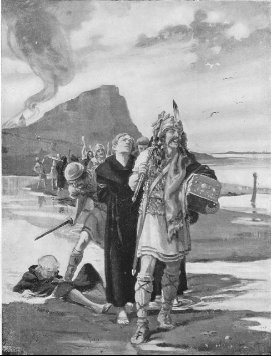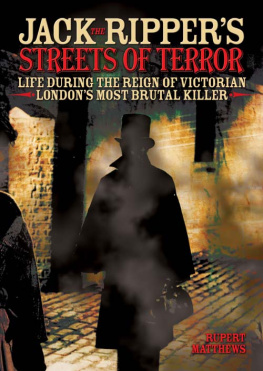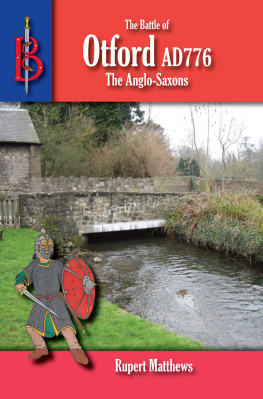Bretwalda Battles
The Viking Wars & the English Civil War
The Sieges of Leicester 943 & 1645
by Rupert Matthews
*****************
Published by Bretwalda Books
Website : Facebook : Twitter : Blog
This ebook is licensed for your personal enjoyment only. This ebook may not be re-sold or given away to other people. If you would like to share this book with another person, please purchase an additional copy for each person. If you're reading this book and did not purchase it, or it was not purchased for your use only, then please purchase your own copy. Thank you for respecting the hard work of this author.
First Published 2013
Copyright Rupert Matthews 2013
Rupert Matthews asserts his moral rights to be regarded as the author of this work.
ISBN 978-1-909099-60-9
*****************
Contents
************
The city of Leicester is today a busy, vibrant and thriving city. It is the largest city in the East Midlands, and the tenth largest in the UKas a whole. The city has a population of 330,000, but that goes up to over 700,000 if the suburbs are included.
The population of the city is young, with a third of the population aged under 25 - a much higher proportion than the national average. The large student population partly accounted for this, but a high birth rate also helps. The economy of the town traditionally relied on shoemaking and hosiery, but since the 1950s engineering has boomed in importance. Several large companies making heavy tools and machinery are based here, benefitting from the large engineering department at Leicester University and the nearby Loughborough University.
This is a busy, prosperous and modern city looking to a future of peace and plenty. But Leicester was not always like this. Three times war has come to Leicester in its most brutal and bloody form. War is never pretty, but siege warfare has a well deserved reputation for being particularly nasty with civilians routinely suffering as badly, if not worse than the combatants.
Three times Leicester has been put under siege, and three times Leicester has fallen to the attacking army. The worst bloodshed came in the wake of the second siege, fought in May 1645. Hundreds of civilians were put to the sword as the Royalist soldiers ran amok after storming the city defences. By comparison the sieges of 943 and June 1645 were almost gentle affairs, but they still caused significant damage.
Some of the marks left by the sieges can still be seen today. The great medieval Abbey lies in ruins, bullet marks can be seen on the remaining stretches of town wall and loopholes penetrate the medieval walls of the Newarke. But time is a great healer. Leicester came through its bloody sieges battered but still existing. For generations Leicester continued in its traditional role as a county town providing a market for local agricultural produce. Then in the early 19th century coal was found nearby, the railway arrived and the industrialization of the city began in earnest. It might almost be that bloody war never came here. Almost.
************
The Viking Wars
Signs and portents filled the skies over England in the spring of 793, or at least so men said with hindsight. Dragons were seen flying overhead, whirlwinds smashed barns and houses to rubble and lightning storms swept the land with unparalleled ferocity. If men wondered what all this meant they did not have long to wait. On June 8th a chronicle records, the ravaging of heathen men destroyed Gods church at Lindisfarne through brutal robbery and slaughter. A monk in France recorded the event as it was reported there Never before has such terror appeared in Britain as we have now suffered from a pagan race. The heathens poured out the blood of saints around the altar, and trampled on the bodies of saints in the temple of God, like dung in the streets
Lindisfarne was the most famous monastery in Northumbria, the English kingdom that stretched from the Humber to the Forth. It had been founded in 635 by Irish monks to convert the pagan northern English, a job completed with commendable swiftness. The monastery had become a treasury of holy books, relics and more secular wealth. Above all it was respected as a seat of learning and sanctity. That such a venerable and respected place should be attacked was shocking in itself. That it should be ransacked by pagans was even more so.
The sacking of Lindisfarne Monastery in Northumberland by a force of Vikings shocked England. The ferocity of the attack by pagans on a peaceful Christian community was bad enough, but the Vikings had arrived undetected and then sailed away without being caught by the local English forces. Suddenly nowhere seemed safe from sudden, brutal attack.
The next year the savage pagans were back. This time they sacked Jarrow Monastery, killing more monks and stealing more treasure. This time they did not get away so easily. A storm kept their ships bottled in the mouth of the Wear and the local Northumbrian militia arrived in time to exact some measure of revenge.
Who these bloodthirsty pagans actually were was not at first clear. They came by sea in sleek, long ships powered by oar and sail. They had come from the north, but they were not Scots. The Scots reported that the pagans had overrun the Orkneys some years earlier and had come from the east over the North Sea. But the pagans came no more and by the end of the 790s they had been mostly forgotten. But they were still there.
In 835 the pagans were back, landing on Sheppey off the Kent coast and plundering the islands villages. The following year more pagans landed at Carhampton in Wessex. This was the largest force so far, having arrived in 25 ships. King Egbert marched to the scene with a hastily raised army and fought the pagans. He lost, and withdrew to await reinforcements but the pagans went before more Wessex men arrived. Two years later Egbert did better, defeating a similarly sized pagan army at Hingston Down.
By this date the English knew who they were up against. The pagans were Scandinavian warriors who came over the North Sea in their longships intent on plunder and mayhem. The English knew the Danes and Norwegians as traders and mercenaries, but this development was something new. The raiders came as organised bodies of men in fleets of up to three dozen ships, with 30 or 40 men in each ship. The raiders were all young men but experienced warriors who had discipline as well as ferocity and skill with weapons.
Quite why Scandinavia suddenly erupted with vast numbers of skilled fighting men was a total mystery at the time, and modern historians have not yet solved the puzzle. There were probably a number of factors at work. Good farming land was scarce in Scandinavia, the population was growing and the ending of wars to the east left many young warriors unemployed. Whatever the reasons that the Vikings left their homelands in search of plunder, wealth and trouble, once they had come they did not stop. The rich lands of Britain, France and Spain were poorly defended and filled with things worth stealing.

















